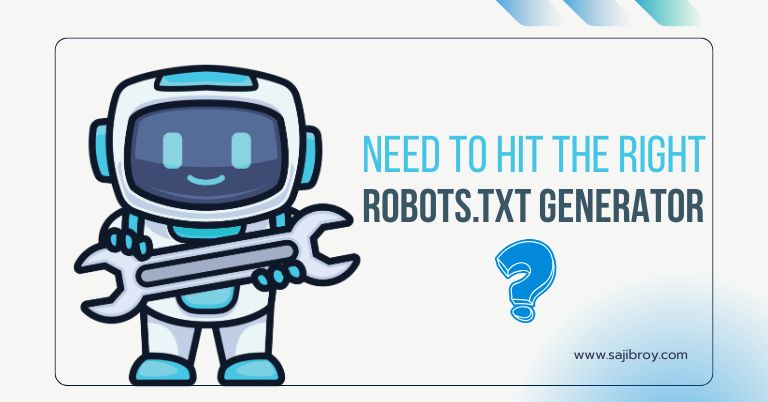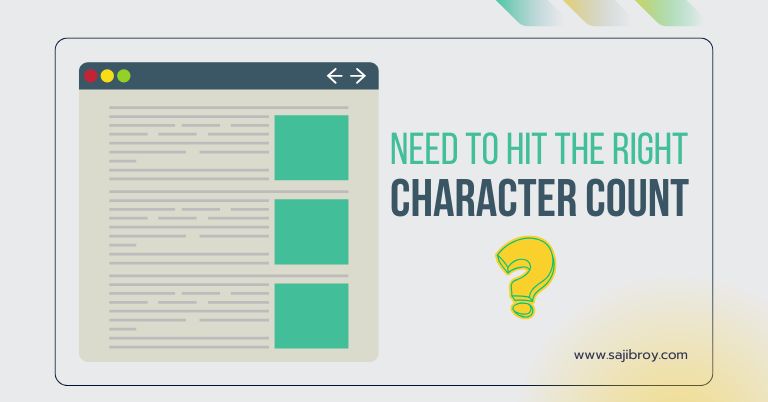In today’s digital age, advertising has become an essential component of any successful marketing strategy. With the rise of mobile devices, responsive display ads have become increasingly popular for their ability to adapt to various screen sizes and types. However, the key to effective responsive display advertising lies in the use of automation. In this blog post, we’ll take a closer look at how responsive display ads use automation to optimize their performance and reach a wider audience.
By harnessing the intelligence of automation, responsive display ads can adapt and optimize themselves in real-time, delivering personalized messages that resonate with each unique viewer and drive results like never before.
- How Does Google Ads Generate Responsive Search Ads?
- How Can Google Ads Help You Advance Your Business Goals?
- How can Performance Planner Serve Your Business?
Let's See the Topic Overview
What are Responsive Display Ads?
Responsive display ads are the ultimate chameleons of the advertising world, seamlessly adapting to any device, format, or audience to create an immersive brand experience that captures attention, sparks emotion, and inspires action.
Before diving into the role of automation in responsive display ads, let’s first understand what they are. Responsive display ads are a type of Google Ads format that automatically adjusts its size, appearance, and format to fit the available ad space on a particular device. This means that one responsive display ad can be shown across a variety of screen sizes, including desktop, mobile, and tablet devices, without the need for multiple versions of the same ad.
What Is Automation in Advertising?
Automation in advertising is more than just a technological innovation, it’s a strategic imperative that empowers marketers to break through the noise, connect with customers on a deeper level, and unleash the full potential of their creative vision.
Automation in advertising refers to the use of technology and algorithms to automate various tasks involved in the advertising process, including ad creation, targeting, bidding, optimization, and reporting. The goal of automation is to improve the efficiency and effectiveness of advertising campaigns by reducing the need for manual tasks and leveraging data-driven insights to optimize performance.
Example of responsive display ads using automation
Let’s say a clothing retailer wants to promote a new line of spring dresses. They upload a variety of images and videos showcasing the dresses, as well as headlines and descriptions highlighting the features and benefits of the dresses. Google’s machine learning algorithms then analyze the uploaded assets and create multiple ad variations optimized for different placements and devices. For example, a user browsing on a mobile device might see an ad with a single image and a shorter headline, while a user browsing on a desktop computer might see an ad with multiple images and a longer headline. Over time, Google tests and optimizes the ad variations in real-time based on user behavior and engagement data to drive higher conversion rates and ROI.
Responsive display ads use automation to streamline the ad creation and optimization process, improve targeting and performance, and reach users across multiple devices and platforms. By leveraging Google’s machine learning algorithms, advertisers can create more effective and efficient ad campaigns that deliver better results.
How Do Responsive Display Ads Use Automation?
Automation is a key factor in making responsive display ads effective. Here are some ways in which automation is used:
1. Dynamic Ad Assembly
As the number of devices and screen sizes available for consumers to browse the internet increases, it’s becoming more challenging for advertisers to create ads that look great on every platform. Responsive display ads help address this issue by allowing ads to adjust to different screen sizes and types. However, creating and optimizing ads for every potential platform can be time-consuming and resource-intensive. This is where dynamic ad assembly comes in.
What is dynamic ad assembly?
A dynamic ad assembly is a form of automation that allows advertisers to create and adjust ads based on the available space on a device. This technology automatically generates different ad variations and optimizes them for various devices and placements. By using dynamic ad assembly, advertisers can eliminate the need for manual design and coding, making it much easier to create effective ads quickly.
How does dynamic ad assembly work?
Dynamic ad assembly works by taking the assets (images, videos, headlines, descriptions, and logos) uploaded by the advertiser and automatically generating different ad variations optimized for various devices and placements. Here’s how the process typically works:
- Advertiser uploads assets: The advertiser uploads various assets in different sizes and formats, such as images, videos, headlines, descriptions, and logos.
- Dynamic ad assembly generates ad variations: Based on the available space on a device, dynamic ad assembly generates different ad variations, including various combinations of assets and sizes.
- Ads are tested and optimized: The generated ad variations are tested and optimized in real-time based on user behavior and engagement data.
- Ad is displayed to the user: The best-performing ad variation is selected and displayed to each individual user based on their past behavior, preferences, and context.
What are the benefits of using dynamic ad assembly?
- Increased efficiency: Dynamic ad assembly saves time and resources by eliminating the need for manual design and coding.
- Improved targeting: Dynamic ad assembly automatically generates ad variations optimized for various devices and placements, ensuring that the ads look great and perform well on every platform.
- Better performance: By testing and optimizing ad variations in real-time, dynamic ad assembly can help improve ad performance and drive higher engagement and conversion rates.
- Flexibility: Dynamic ad assembly can adapt to different screen sizes and formats, making ads more versatile and effective at reaching users across multiple devices and platforms.
- Cost-effective: By using a single ad format that can adapt to different placements and devices, advertisers can save money on ad creation and targeting.
Example of dynamic ad assembly in action:
Let’s say a travel company wants to promote a new vacation package. They upload various images and videos showcasing the destination, as well as headlines and descriptions highlighting the features and benefits of the package. Dynamic ad assembly then generates different ad variations optimized for various devices and placements. For example, a user browsing on a mobile device might see an ad with a single image and a shorter headline, while a user browsing on a desktop computer might see an ad with multiple images and a longer headline. Over time, dynamic ad assembly tests and optimizes the ad variations in real-time based on user behavior and engagement data to drive higher conversion rates and ROI.
A dynamic ad assembly is a powerful tool that allows advertisers to create and adjust ads automatically based on the available space on a device. By leveraging this technology, advertisers can create more effective and efficient ad campaigns that deliver better results. As the number of devices and screen sizes continues to grow, dynamic ad assembly will become increasingly important for advertisers who want to reach users on every platform.
2. Automated Image Optimization
Images are a crucial part of any responsive display ad, and they play a significant role in capturing the audience’s attention and driving engagement. However, creating high-quality images that look great on all devices can be challenging. This is where automated image optimization comes in.
What is automated image optimization?
Automated image optimization is a process that involves resizing, cropping, and compressing images to ensure they load quickly and look great on all devices. This technology uses algorithms to automatically optimize images based on the available space and device resolution, eliminating the need for manual adjustments.
How does automated image optimization work?
- Automated image optimization works by taking the images uploaded by the advertiser and automatically optimizing them for various screen sizes and types. Here’s how the process typically works:
- Advertiser uploads images: The advertiser uploads various images in different sizes and formats, such as PNG or JPEG.
- Images are analyzed and optimized: Automated image optimization analyzes the images and determines the best size, format, and compression level for each device and placement.
- Optimized images are created: The optimized images are automatically created and stored in a library for use in the ad campaign.
- Images are served to users: The optimized images are served to users based on their device and screen size, ensuring that the images look great and load quickly on every platform.
What are the benefits of using automated image optimization?
- Increased efficiency: Automated image optimization saves time and resources by eliminating the need for manual adjustments and resizing.
- Improved performance: By optimizing images for various devices and screen sizes, automated image optimization can improve ad performance and drive higher engagement and conversion rates.
- Consistency: Automated image optimization ensures that the images look great and load quickly on every platform, providing a consistent user experience across all devices.
- Cost-effective: Using automated image optimization, advertisers can save money on image creation and resizing.
- Flexibility: Automated image optimization can adapt to different screen sizes and formats, making ads more versatile and effective at reaching users across multiple devices and platforms.
Example of automated image optimization in action:
Let’s say a clothing retailer wants to promote a new line of clothing. They upload various images showcasing the clothing, including product shots and lifestyle images. Automated image optimization then analyzes the images and optimizes them for various devices and placements. For example, a user browsing on a mobile device might see an image with a smaller file size and a different crop than a user browsing on a desktop computer. The optimized images are served to users based on their device and screen size, ensuring that the images load quickly and look great on every platform.
An automated image optimization is a powerful tool that allows advertisers to create high-quality ads that perform well on every device and screen size. By using this technology, advertisers can save time and resources while improving ad performance and providing a consistent user experience across all platforms. As the number of devices and screen sizes continues to grow, automated image optimization will become increasingly important for advertisers who want to reach users on every platform.
3. Automated Testing
A/B testing is an essential part of any advertising campaign, and it involves comparing two different versions of an ad to see which one performs better. This process is crucial to optimize an ad campaign for maximum performance, but it can be time-consuming and challenging to do manually. This is where automated testing comes in.
What is automated testing?
Automated testing is the use of software to automatically test and compare different ad versions to find the best-performing one. It eliminates the need for manual testing and enables advertisers to test multiple ad variations quickly.
How does automated testing work?
- Automated testing works by using software to randomly display different ad versions to users and track their performance. Here’s how the process typically works:
- The advertiser creates multiple ad versions: The advertiser creates multiple ad versions with different headlines, images, and copy.
- Automated testing software randomly displays ad versions: The automated testing software randomly displays different ad versions to users, tracking their performance.
- Results are analyzed: The software analyzes the results and determines which ad version performed the best.
- Best-performing ad version is used: The best-performing ad version is used in the ad campaign, and the testing process continues with new ad variations.
What are the benefits of using automated testing?
- Increased efficiency: Automated testing saves time and resources by eliminating the need for manual testing and optimization.
- Improved performance: By automatically testing multiple ad variations, advertisers can quickly find the best-performing version, improving ad performance and driving higher engagement and conversion rates.
- Cost-effective: By using automated testing, advertisers can save money on testing and optimization, allowing them to allocate more budget towards other areas of the campaign.
- Objective results: Automated testing eliminates bias and subjectivity from the testing process, providing objective results that advertisers can rely on to optimize their campaigns.
- Flexibility: Automated testing can adapt to different ad formats and placements, making it easy to optimize campaigns for maximum performance across multiple platforms.
Example of automated testing in action:
Let’s say a travel company wants to promote a new vacation package. They create multiple ad versions with different headlines, images, and copy. Automated testing software then randomly displays the different ad versions to users and tracks their performance. The software determines that the version with the headline “Escape to Paradise” and an image of a tropical beach performs the best. The travel company then uses this version in their ad campaign, and the testing process continues with new ad variations.
Automated testing is a powerful tool that enables advertisers to quickly and efficiently optimize their ad campaigns for maximum performance. By using this technology, advertisers can save time and resources while improving ad performance and driving higher engagement and conversion rates. As the advertising landscape continues to evolve, automated testing will become increasingly important for advertisers who want to stay ahead of the competition.
4. Automated Bidding
Bidding is an essential part of any advertising campaign, as it determines how much an advertiser pays for each click or impression. However, manually setting bids can be time-consuming and challenging, especially when dealing with multiple ad placements. This is where automated bidding comes in.
What is automated bidding?
Automated bidding is the use of software to automatically set bids for ad placements based on specific performance goals. It eliminates the need for manual bidding and enables advertisers to optimize their campaigns for maximum performance.
How does automated bidding work?
- Automated bidding works by using algorithms to analyze performance data and adjust bids accordingly. Here’s how the process typically works:
- Advertiser sets performance goals: The advertiser sets specific performance goals, such as cost per click (CPC) or cost per acquisition (CPA).
- Automated bidding software analyzes performance data: Automated bidding software analyzes performance data, such as click-through rates (CTR) and conversion rates, to determine the optimal bid for each ad placement.
- Bids are adjusted: The software automatically adjusts bids based on performance data to ensure that the ads are shown to the right audience at the right time, maximizing the return on investment.
- Results are analyzed: The software analyzes the results and adjusts bids accordingly to optimize performance.
What are the benefits of using automated bidding?
- Increased efficiency: Automated bidding saves time and resources by eliminating the need for manual bidding and optimization.
- Improved performance: By automatically adjusting bids based on performance data, advertisers can optimize their campaigns for maximum performance and achieve their specific performance goals.
- Cost-effective: Automated bidding can help advertisers save money by ensuring that they are only bidding on placements that are likely to drive results.
- Objectivity: Automated bidding eliminates bias and subjectivity from the bidding process, providing objective bids that are based on performance data.
- Scalability: Automated bidding can be scaled up or down depending on the size of the campaign, making it a flexible and scalable solution for advertisers of all sizes.
Example of automated bidding in action:
Let’s say a retailer wants to promote a new product line through a Google Ads campaign. The retailer sets specific performance goals, such as a target cost per acquisition (CPA) of $50. The automated bidding software analyzes performance data and adjusts bids based on the performance of each ad placement. The software determines that placement on a specific website generates the most conversions at the target CPA. The software then automatically adjusts the bid for that placement to ensure that the ads are shown to the right audience at the right time, maximizing the return on investment.
Automated bidding is a powerful tool that enables advertisers to optimize their ad campaigns for maximum performance. By using this technology, advertisers can save time and resources while improving ad performance and achieving specific performance goals. As the advertising landscape continues to evolve, automated bidding will become increasingly important for advertisers who want to stay ahead of the competition.
What are the benefits of using automation in responsive display ads?
Automation has become an integral part of the digital advertising landscape, and it has revolutionized the way advertisers create, manage, and optimize their campaigns. In the case of responsive display ads, automation offers a range of benefits that can help advertisers to maximize their performance and achieve their goals.
Here are some of the key benefits of using automation in responsive display ads:
- Efficient ad creation: Creating ads that are optimized for different screen sizes and types can be time-consuming and challenging. Automation allows advertisers to create ads quickly and easily, without the need for manual design and coding. This saves time and resources and enables advertisers to focus on other aspects of their campaigns.
- Improved ad relevance: Automation allows for real-time ad optimization, which means that ads can be tailored to each individual user based on their interests and behavior. This improves ad relevance and can lead to higher engagement rates and better overall campaign performance.
- Cost-effective ad management: Manual ad management can be costly, especially when dealing with multiple ad variations and placements. Automation allows for the efficient management of ad campaigns, which can help to save time and resources and reduce costs.
- Scalability: Responsive display ads can be used across a wide range of devices and platforms, making them a scalable solution for advertisers of all sizes. Automation allows for the efficient scaling of campaigns, which can help advertisers to reach a wider audience and achieve their goals.
- Real-time optimization: Automation allows for real-time optimization of ad campaigns, which means that bids, targeting, and creative elements can be adjusted on the fly based on performance data. This ensures that campaigns are always optimized for maximum performance and can lead to better ROI.
- Data-driven insights: Automation provides advertisers with valuable data-driven insights that can help to inform future campaigns. This includes data on user behavior, ad performance, and campaign effectiveness, which can be used to optimize future campaigns and improve overall performance.
- Consistency: Automation ensures that ads are consistent across all devices and platforms, which can help to build brand recognition and trust. Consistent messaging and branding can also help to improve ad performance and increase engagement rates.
Automation offers a range of benefits for advertisers using responsive display ads. By leveraging automation, advertisers can create, manage, and optimize their campaigns more efficiently, resulting in improved performance and ROI. As technology continues to evolve, automation is likely to become even more important for advertisers who want to stay ahead of the competition and achieve their goals.
Should You Use Responsive Ads for Your Marketing?
As the advertising landscape continues to evolve, it’s becoming increasingly important for businesses to adopt a mobile-first approach to marketing. With more and more consumers using mobile devices to browse the internet, responsive display ads have emerged as a powerful tool for reaching and engaging audiences across multiple platforms and devices. But is using responsive ads right for your marketing strategy? In this blog segment, we’ll explore the benefits and drawbacks of responsive ads to help you make an informed decision.
Benefits of Using Responsive Ads for Marketing
- Increased Reach: With responsive ads, you can reach a larger audience across multiple devices and platforms. This can help you expand your reach and connect with potential customers who may be using different devices to access your website or online content.
- Improved User Experience: Responsive ads are designed to adapt to different screen sizes and types, ensuring that your ads look great and load quickly on all devices. This can help improve the user experience and increase engagement with your ads.
- Cost-Effective: Responsive ads can be more cost-effective than traditional display ads, as they allow you to create multiple ad variations without the need for additional design or coding resources.
- Better Performance: Responsive ads are optimized for performance, leveraging machine learning and automation to deliver the best results. This can help you achieve better performance metrics such as click-through rates (CTR), conversions, and return on ad spend (ROAS).
Drawbacks of Using Responsive Ads for Marketing
- Limited Control: With responsive ads, you have less control over the creative elements of your ads. While you can specify some elements such as headlines, descriptions, and images, the overall layout and design are determined by the ad platform’s algorithms.
- Testing Can Be Challenging: With multiple ad variations, testing and optimization can be more challenging with responsive ads. However, automation tools can help you overcome this challenge by automating the testing and optimization process.
- Requires High-Quality Images: Responsive ads rely heavily on high-quality images to make an impact. If your business doesn’t have access to high-quality images, creating effective responsive ads can be challenging.
Overall, using responsive ads can be an effective way to reach and engage audiences across multiple devices and platforms. However, it’s important to consider the benefits and drawbacks of using responsive ads before incorporating them into your marketing strategy. By understanding the potential benefits and drawbacks of responsive ads, you can make an informed decision and create effective campaigns that drive results.
Conclusion
Responsive display ads are a powerful advertising tool that can help advertisers reach a wider audience across multiple devices. However, to achieve maximum performance, automation is essential. By leveraging dynamic ad assembly, automated image optimization, automated testing, and automated bidding, advertisers can create high-quality ads that perform well across various screen sizes and types. This makes responsive display ads an excellent choice for any advertiser looking to reach a wide audience and achieve maximum ROI.
Keep Learning With Sajib Roy












